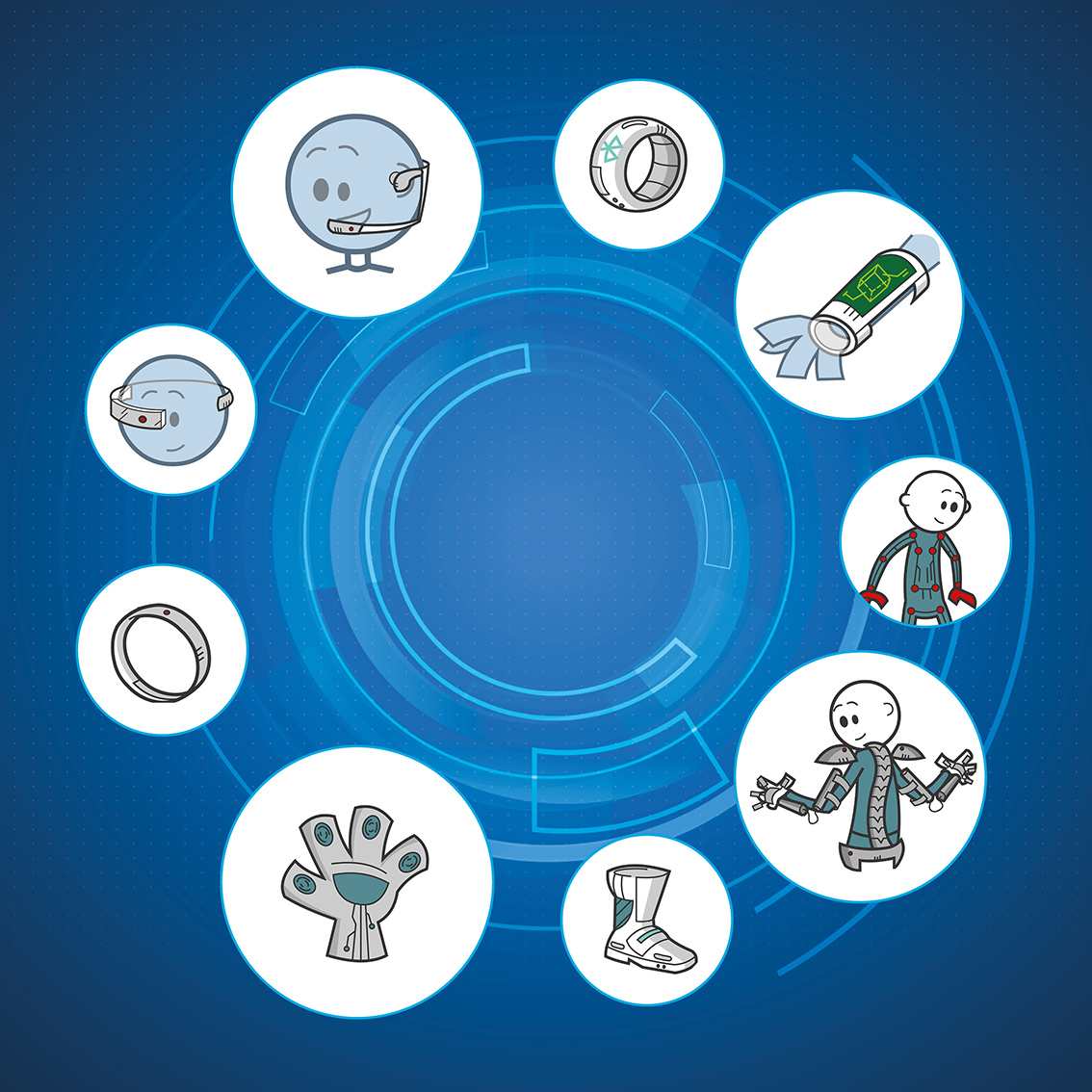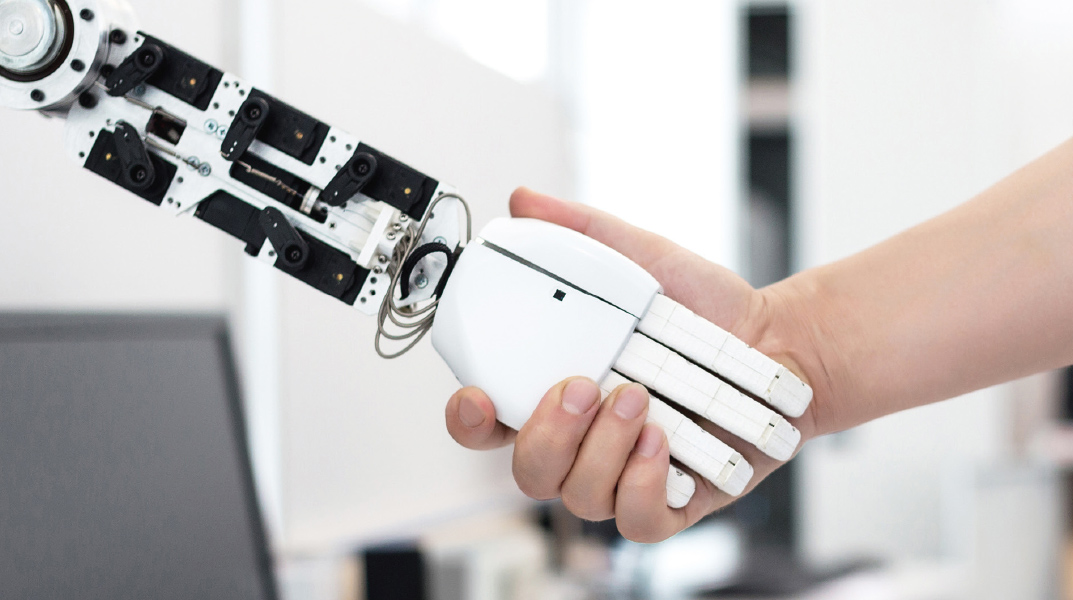(Kopie 1)
Blue Collar Cyborgs
By Dr. Wolfgang Keplinger, ROI Management Consulting AG
In the smart factory, much of the information from day-to-day business needs to be available in real time. Human machine interfaces, HMIs for short, make this possible. For example, wearables or interactive assistance systems help with order picking, assembly, production, service and maintenance tasks, or employee training. We are introducing particularly useful HMIs that make manufacturing and logistics faster, more flexible and error-free.

Headsets
Headphones with built-in microphone are probably the best-known and most widely used interactive assistance system in logistics today. Their main application is pick-by-voice, in which the order picker is guided by acoustic announcements to the next article to be picked up and confirms the execution by voice command.
Smart Glasses
Smart glasses project additional information via a transparent display or laser projection into the field of view. For example, they show the picker how to get to the next article, how many pieces he should take and allows him to confirm the execution of the task by scanning the article barcode. Some companies are already working on transferring the functionalities of smart glasses to contact lenses, so-called smart contact lenses. According to current projections, these lenses should be approved and available on the market some time in 2018/2019.
RFID bracelets and sensor bracelets
An RFID transponder is integrated into a bracelet, with which the user is uniquely identified. This way, machines can be set to the height of the user automatically or the next displayed steps can be adjusted to the skill level of the employee. It may also be granted rights to operate certain systems or to carry out specific repair. The execution of critical work steps can be documented, along with who has assembled, tested or released a specific product.
RFID and wired gloves
An RFID glove is equipped with an RFID reader for reading data from RFID transponders. This leaves the hands of the user free and reposting of the picked goods occurs more or less automatically. Regardless of whether goods are being moved from the shelf to the order picking cart, or from there to the packaging or the shipping pallet - the scanning step is no longer necessary. The wired glove, on the other hand, is a 3D input device that, in conjunction with virtual reality, enables flexible and easy detection of specific arm or finger positions or the determination of the position and orientation of the glove relative to the environment. This enables VR applications or controls robots.
Magic Shoes
Microchips incorporated into shoes measure and transmit data. They enable the user to control machines by gestures with the feet, for example, but in return they also receive (warning) signals through vibration of the chip.
NFC rings
A ring contains a transponder, which communicates via NFC (Near Field Communication) with the surroundings over short transmission distances. This unlocks systems or smartphones, opens doors or access controls, and prevents order picking errors.
Smart watches and forearm computers
Smart watches are mini-computers for the wrist, which are usually linked with a mobile device. They collect information from the person wearing them (e.g. the distance travelled) or display work orders. In addition, smart bracelets project image signals from a handheld directly onto the forearm of the user. The monitor is then operated directly on the skin.
Motion Capturing Clothes
Sensors integrated into the fabric fibres measure the wearer‘s movements and generate data about the wearer. Among other things, the objectives of this HMI group are to improve the health of workers, which in turn should lead to longer careers and to a reduction in posture-related or accident-related absence from work.
Exoskeletons
In addition to health and rehabilitation applications, there is a growing number of companies offering exoskeletons to assist workers in heavy lifting or handling operations. Panasonic, for example, has developed an assist suit that supports logistics employees in the daily lifting processes of parcels and thus relieves the strain on the lower back.

Today‘s cutting-edge HMIs are impressive. However, they are merely intermediate steps on the way to a truly smart world, which is defined by „ambient computing“, a ubiquitous, but not physically perceptible intelligence: „Compared to what’s coming, they are like the Commodore PET or those huge car phones in old movies … We are a long way from the invisible, omnipresent computer in Starship Enterprise.“ Walt Mossberg
